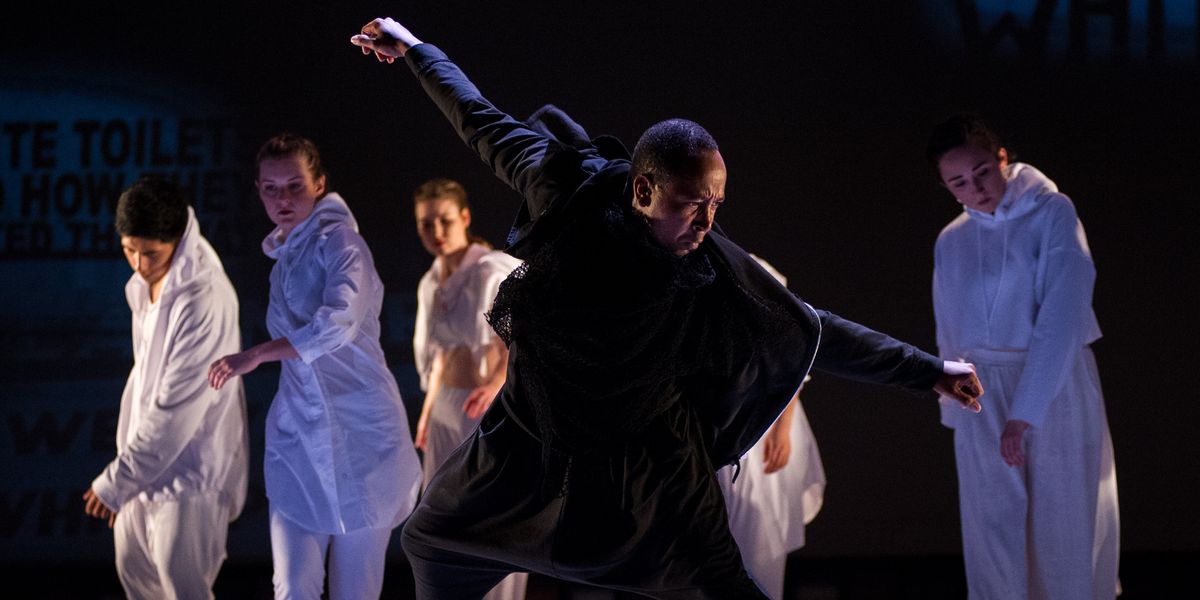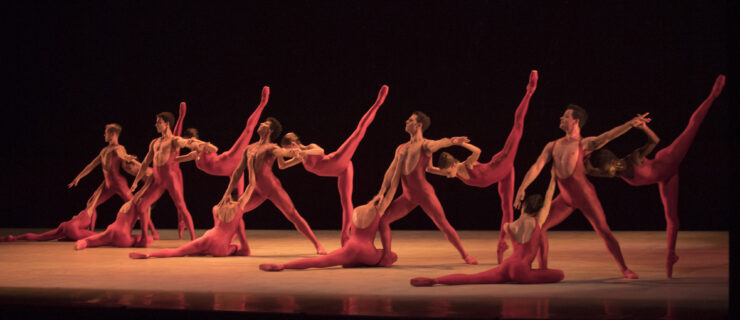Charles O. Anderson's New Black Lives Matter–Inspired Work Is Required Viewing in 2020
After the March lockdown, Charles O. Anderson only spent a moment mourning the canceled tour of his most recent opus, (Re)current Unrest, before creating a digital version. Described as “an evening-length immersive performance installation ritual focusing on the ongoing cycle of Black oppression and the momentum of the Black Lives Matter movement,” the score enlists Steve Reich’s three earliest works based on Africanist texts: “It’s Gonna Rain,” “Come Out” and “Pendulum.”
The digital iteration launched the Texas Performing Arts season in October and is scheduled to officially premiere on December 5 at Washington, DC’s Dance Place, followed by a tour. Anderson, who is the founding artistic director of dance theatre X and head of the dance program at University of Texas at Austin, plans to travel with the piece, doing engagement workshops at each site.
Since you first started working on
(Re)current Unrest, there have been many more instances of police violence against Black people. What has changed for you, both in terms of the work and your ability to get traction?
The piece was born out of the genesis of the BLM movement, and the deaths of Eric Garner, Michael Brown and Philando Castile. I want to help millennials understand that what is happening now is not unique to them. It’s a recurrent unrest; this is not the first time.
The big shift is that people actually seem to know what I am talking about now. I do not need to appease presenters who were doing it because it was their diversity piece. Now people take the theme seriously, and the work seriously.
How would you describe the movement vocabulary?
I would say Afro-contemporary, which is contemporary dance informed by African diasporic movement. “Contemporary” is such a culturally loaded (co-opted) term—it doesn’t always mean from a European lineage. “Contemporary” refers to when you do something that departs from tradition. There are many forms of contemporary dance. This work stands on the shoulders of Black culture and traditions, so the movement does as well.
Tap is also a powerful part of the piece.
It’s partially because of the position of tap in this country, with its early roots in minstrel shows. Tap is a sonic embodied abstraction of Africanist rhythms. When you listen to Reich’s early music, and bring tap next to it, with feet moving as fast as Reich’s clapping music, you can’t miss the Africanist influence. This work is about bringing those influences to the foreground in service of bringing the Black American experience to the foreground.
What’s it like to switch gears to a digital format?
It was shot from an audience member’s perspective, so they will feel like they are in the middle of everything rather than the outside. We were thinking we needed to scale down for the tour pre-COVID, but now we are back to having all the space we need, with full scenic design, integrated media and 30 dancers (rotating casts of 12). We did a multi-camera shoot, cell phone cameras, footage of the satellite videos that were submitted after my NCCAkron residency. We are also adapting to each of the presenter’s visions: Dance Place has planned an audience tent show, while at 651 Arts in Brooklyn it will be more like a museum installation.
What’s next for you?
I am returning to an earlier work, inspired by science fiction writer Octavia Butler, that I am now calling Croatoa. It focuses on a dystopian near future that we are actually living in now. I refuse to use the cliché of joy, but the thing we forget is that you don’t keep going without hope. I am investigating what that looks like.




